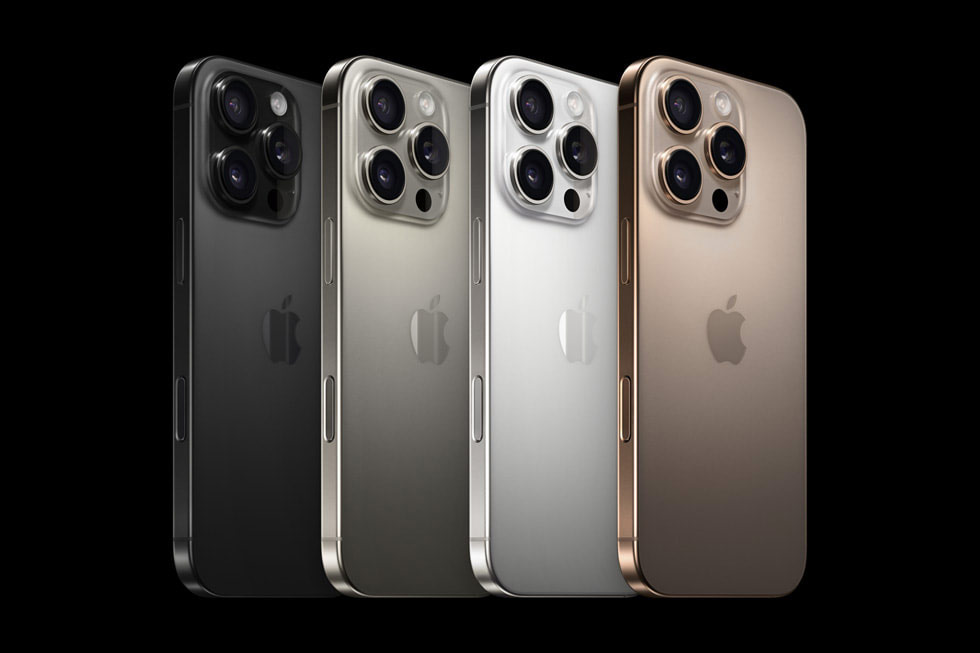It’s hard to believe that the first iPhone was only launched 17 years ago – not long at all in human terms, but an eon in the annals of consumer technology when you consider its impact.
The iPhone’s influence has been huge, helping to spark a smartphone revolution that has completely changed how we communicate, interact, do business – and take photographs.
The new iPhone 16 series launched today and Apple has a fight on its hands. It’s fair to say the last few new iPhone launches have been far less exciting than the momentous day Steve Jobs took to the stage with the first model in 2007.
As our expert phone tester, and committed iPhone-o-phile, Amy Davies noted back in July, ‘the models are still pretty good, but I haven’t been particularly excited by anything Apple has had to offer in recent years – plenty of Androids have better cameras, including the Xiaomi 14 Ultra, the Samsung Galaxy S24 Ultra and the Google Pixel 9 Pro.’
While Apple is hardly on skid row, iPhone sales have been challenging of late, and the company is no longer in the list of top five smartphone makers in the massive Chinese market.
So with this autumn launch of the iPhone 16 series – the last launch before Black Friday and Christmas, remember – there is a lot at stake. Has Apple delivered any killer blows or just served up incremental improvements?

Apple iPhone 16 and iPhone Plus at a glance
- $799/£799 – iPhone 16
- $899/£899 – iPhone 16 Plus both with 128GB of storage
- Sales start September 20th
- 48MP wide camera, f/1.6 aperture, 26mm equivalent (this goes down to 12Mp in telephoto mode).
- New ‘light mode’ feature which combines computational photography and pixel binning to generate smaller, more ‘sharing friendly’ 24Mp images for social media etc.
- 12MP ultrawide camera, f/2.2 aperture, 13mm equivalent focal length, also features macro photography mode
- 6.1-inch screen for iPhone 16, and 6.7-inch for the iPhone 16 Plus
- iOS 18
- Newly developed A18 chip

Apple iPhone 16 Pro and Pro Max at a glance
- $999/£999 – iPhone 16 Pro, 128GB storage
- $1,199/£1,199 – iPhone 16 Pro Max, 256GB base model
- Sales start September 20th.
- 48MP main camera with second generation Quad Pixel sensor that claims to read data twice as fast
- 48MP ultrawide camera (12Mp on the previous version)
- 5x telephoto camera
- 4K video at 120 fps (compared to 60 fps on the iPhone 15 Pro) for improved slow-motion effects
- The iPhone 16 Pro has a 6.3-inch screen, while the iPhone 16 Pro Max offers 6.9-inches
- Four mic set up for improved audio recording
- New ‘Photographic Styles’ to help with photo editing, accessed via the Camera Control feature (see below)
- iOS 18
- Newly developed A18 Pro chip

The all-new Camera Control
A major addition to the iPhone 16 range is the new Camera Control, a button/slider that reduces the need to touch the screen. It can be used in landscape or portrait orientation, with one click launching the camera app (you can also click and hold for quick video recording).
The Camera Control features ‘haptic feedback’ like a mechanical camera shutter; simply half press it to bring up a preview to help with focusing and framing, and there is also quick access to zooming and other key camera functions.

Being able to half-press the Camera Control to check the depth of field in a portrait, for example, or access other key settings, makes the new iPhones feel much more like using a conventional camera.
With the iPhone 16 Pro and Pro Max, an update later this year is expected to add more options for controlling focus and exposure.
It’s not just AI, it’s Apple Intelligence
At today’s launch, Apple CEO Tim Cook was keen to stress from the get-go that the new phones are very much built around Apple’s implementation of AI, which it calls ‘Apple Intelligence.’
Apple gave the examples of using Apple Intelligence to find an old photo in your library just by describing it, jumping to a specific moment in a video via voice command, arranging relevant photos and videos into a storyline, asking SIRI for step-by-step guidance on deleting duplicate photos, telling the iPhone 16 to send a friend the photos from Saturday’s BBQ, and so on.
Apple Intelligence will also be used to expedite image editing – removing background distractions for example – though details were sketchy at this stage.
These new AI features are being rolled out over the next few months, with a free software update in beta form expected from October (the UK English version will be available from December).
(Very) early impressions
Apple’s roll-out was as slick as it could be for a Monday night (in the UK) launch, and while there is a lot that sounds really good about the new phones, we won’t know for sure until we do a full review.
While many of the new specifications are indeed impressive, there is also a sense that Apple is happy to preach to the converted rather than focussing on winning over members of the growing army of Android users eating into iPhone sales (indeed, the BBC reported that Apple shares fell when the new phones were announced, though markets can be notoriously skittish).
The new phones’ camera specifications haven’t leapt forward massively, and Camera Control, while nice to have and (literally) handy, could fall short of being a killer blow to rivals – though again this will depend on how fully featured it turns out to be.
And while it sounds cool to be able to use Apple Intelligence to speed up image editing and transfer, or ask SIRI to tidy up your photo library and find out more about a fancy car by pointing your phone at it, Android rivals are likely to continue upping the ante.
On the positive side, Apple has certainly delivered on some of our wishlist, so keep coming back for more analysis on the new iPhone 16 range, and our thoughts on how it compares with both older iPhones and the Android competition.
Follow AP on Facebook, Twitter, Instagram, YouTube and TikTok.








